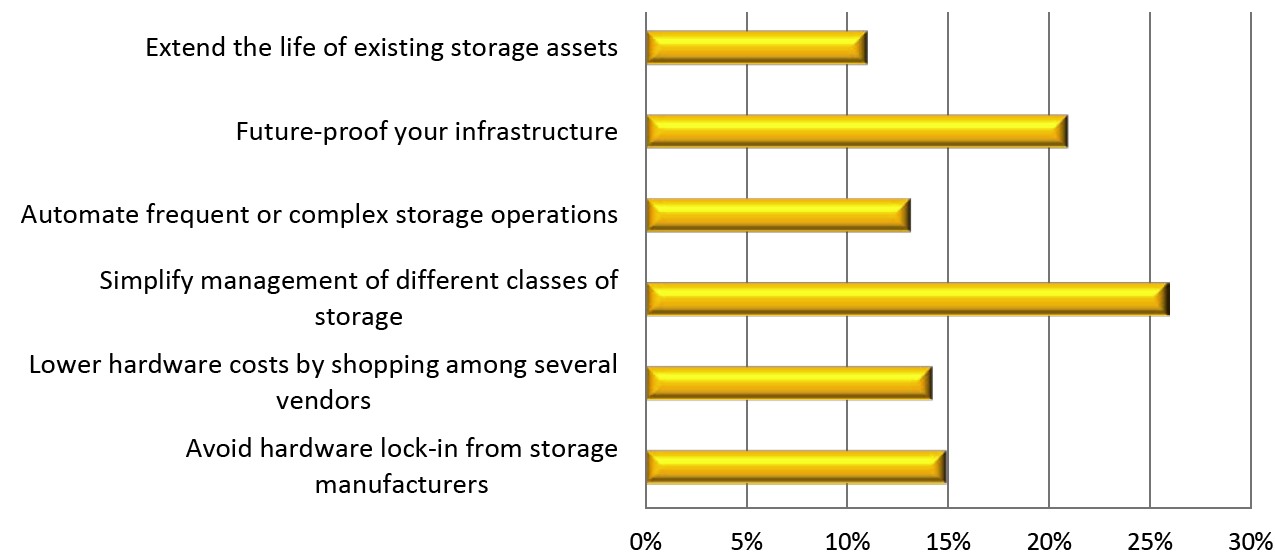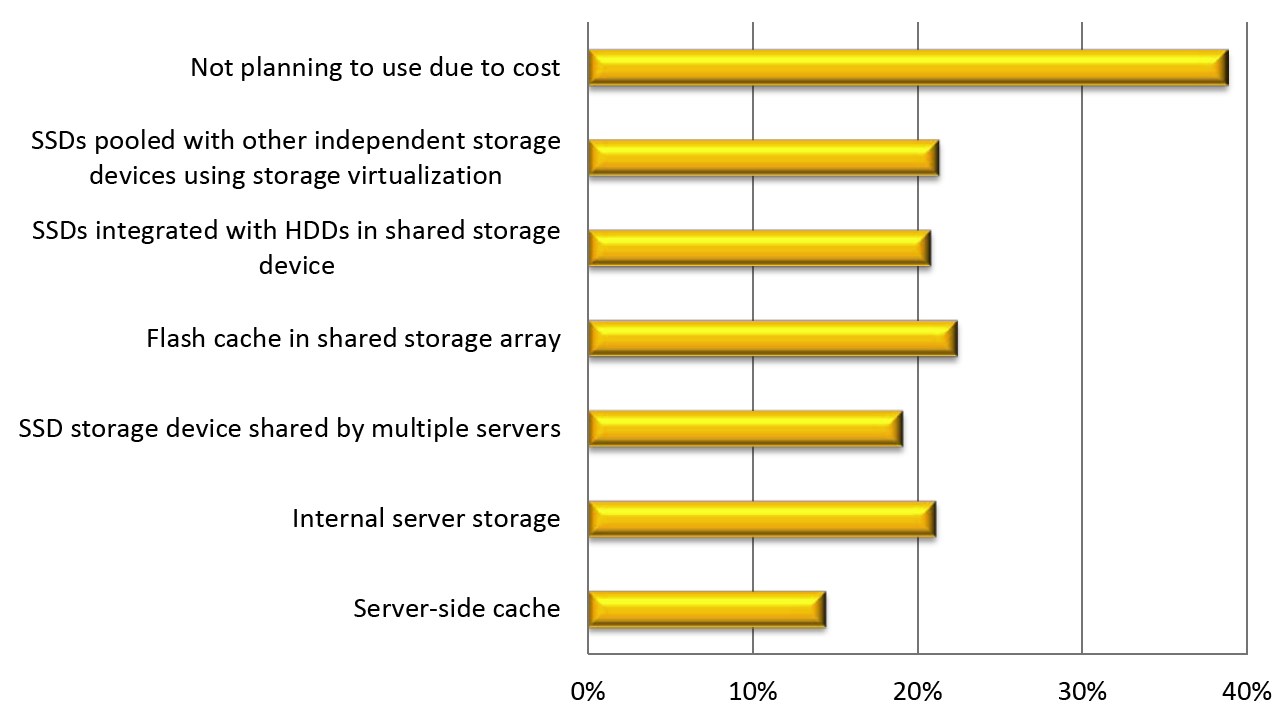26% of Institutions Look to Software-Defined Storage – DataCore
40% not planning to use SSDs for server virtualisation projects
This is a Press Release edited by StorageNewsletter.com on April 22, 2014 at 2:54 pmFor the fourth consecutive year, DataCore Software Corporation conducted a survey of 388 global IT professionals to identify current storage challenges that organisations are facing and what forces are driving demand for software-defined storage (SDS).
This year’s State of Software-Defined Storage report shows that these institutions look for software-defined storage (SDS) to simplify management (26%) of their ‘isolated islands’ of storage devices and enable them to reduce disruptions (30%), better protect investments (32%) and future proof their infrastructure (21%) to absorb new technologies like flash.
The move to SDS is very appealing considering that almost half of respondents identified the difficulty of migrating between different models and generations of storage devices as preventing them from using other manufacturers or models of storage devices that could well reduce their costs.
Business Drivers for Software-defined Storage
Number of Respondents = 388
Highlights of Survey Include:
- The two main factors that impede organisations from considering different models and manufacturers of storage devices were the plethora of tools required to manage them (41%) and the difficulty of migrating between different models and generations (37%).
- Interestingly, 39% of respondents don’t run into these concerns as independent storage virtualisation software allows their organisations to pool different devices and models from competing manufacturers and manage them centrally.
- More than half of the respondents (63%) said that they currently have less than 10% of capacity assigned to flash storage.
- Nearly 40% of respondents said that they were not planning to use flash or solid state disks for server virtualisation projects due to cost concerns.
- When asked how serious an obstacle performance degradation or the inability to meet performance expectations was when virtualising server workloads, 23% of respondents ranked it as the most serious obstacle, and 32% viewed it as somewhat of an obstacle to virtualisation.
- Similar to last year, both the ability to enable storage capacity expansion without disruption (30%) and the improvement of DR and BC practices (32%) ranked highest for reasons that organizations deployed storage virtualisation software.
Precentage Using Flash Memory and Solid State Disks in Server Virtualization Projects
SDS needed to stop proliferation of ‘Separate Storage Islands’
“The results of this survey confirm one of the biggest and most frustrating IT problems organisations are currently facing is the difficult and daunting task of managing diversity and migrating between different vendors, models and generations of storage devices – which prevent them from entertaining more attractive alternatives from competing suppliers,” said George Teixeira, president and CEO, DataCore. “SDS is not only designed to help organisations pool all of their available storage assets, but it allows organisations the ability to manage end-to-end and to add any type of storage asset to their existing storage architecture – helping raise productivity and keeping costs to a minimum.”
“One of the more interesting findings in DataCore’s SDS survey, was that 63% of respondents said that they have less than 10% of capacity assigned to flash storage,” said Randy Kerns, senior analyst, Evaluator Group. “With all of the hype around the ‘all-flash data centre,’ it is clear that new fast hardware technology alone is not the answer; there are multiple critical factors preventing organisations from making this move – lack of smart software that integrates and optimises their use, the relative high cost and the realisations that not all applications benefit from flash devices.”
The broad makeup of respondents to DataCore’s State of Software-Defined Storage survey provides insights across a statistically significant cross-section of IT organisations from different sized institutions and a range of vertical segments. IT professionals from organisations across the globe participated in the survey, with 57% of respondents from organisations with less than 1,000 employees, 23% of respondents from organisations with 1,000 to 5,000 employees, and 20% of respondents from organisations with more than 5,000 employees. Respondents represented a range of industries, including financial services (13%), healthcare (12%), government (9%), manufacturing (16%), education (12%), IT services (16%) and other (22%).
DataCore’s 2014 State of Virtualisation Survey was conducted in March 2014.













 Subscribe to our free daily newsletter
Subscribe to our free daily newsletter

